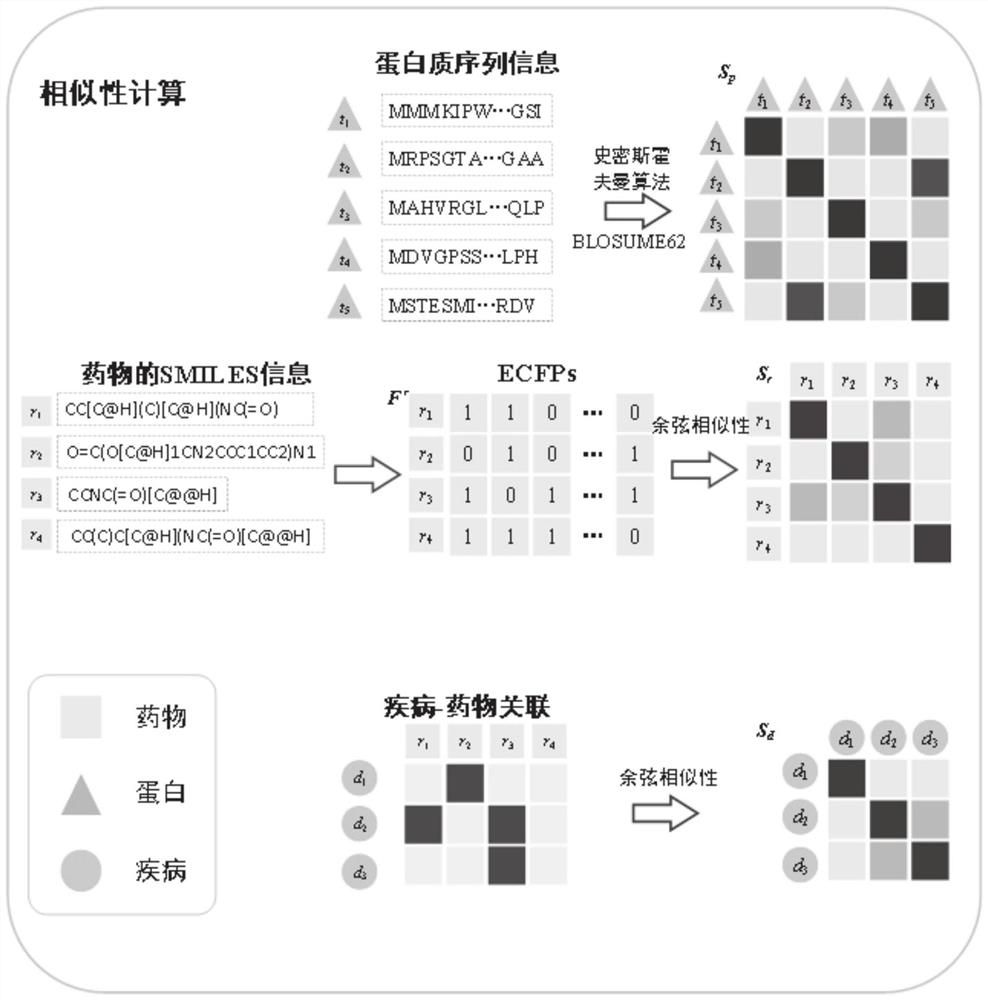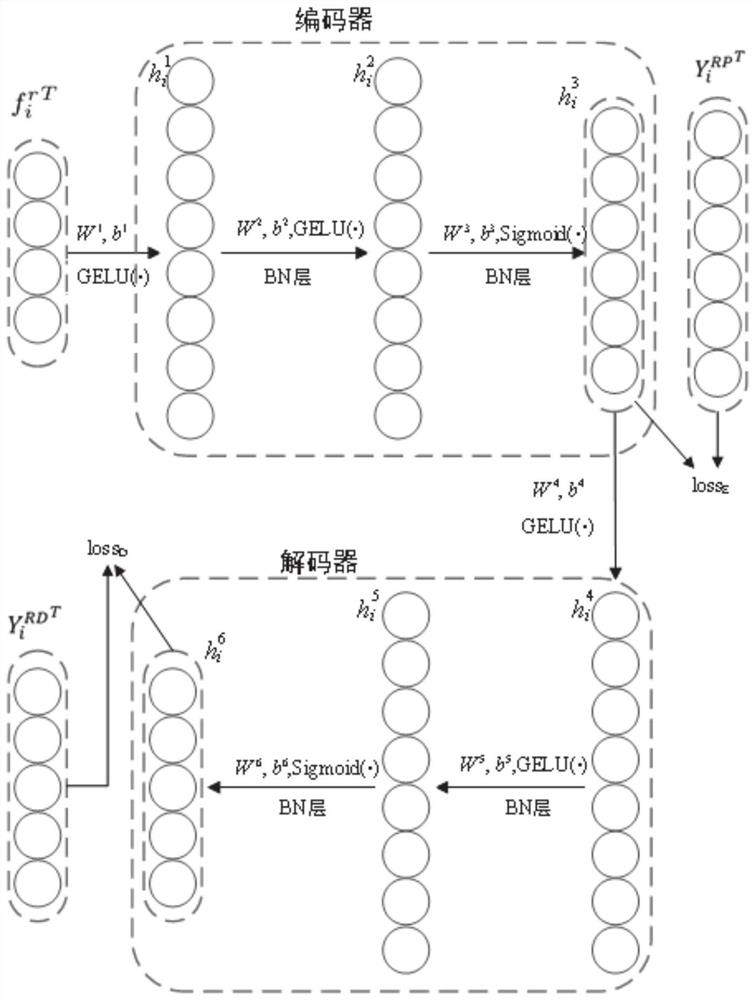Drug target prediction method for keeping consistency of chemical properties and functions of drug and system thereof
A technology of medicinal chemistry and target prediction, applied in molecular design, etc., can solve problems such as drug misuse
- Summary
- Abstract
- Description
- Claims
- Application Information
AI Technical Summary
Problems solved by technology
Method used
Image
Examples
Embodiment 1
[0049] Embodiment 1 of the present invention provides a drug target prediction system that maintains drug chemical properties and functional consistency, the system comprising:
[0050] Obtaining a module for obtaining the chemical fingerprint of the drug to be predicted;
[0051] The calculation module is used to use the trained feature selection model to process the chemical fingerprint of the drug to obtain an interaction score matrix between the drug and the target; the feature selection model regards the target of the drug as a feature of the drug in protein space, The indications of the drug are regarded as the characteristics of the drug in the disease space; among them, the feature selection model considers the similarity between target sequences and the similarity between diseases during training, and uses the chemical fingerprint space (dimension) of different drugs The similarity, the similarity in the target protein space (dimension) and the similarity error in the...
Embodiment 2
[0067] In Example 2, a new drug-target interaction prediction method is proposed, which focuses on maintaining the consistency of drug chemical properties, molecular mechanisms and clinical manifestations.
[0068] Firstly, the data set of drug-target interaction prediction was extracted from several related public databases, and the chemical fingerprint of the drug, the amino acid sequence of the protein, and the drug-target interaction data were integrated by constructing a drug-protein-disease heterogeneous network. and drug indication data.
[0069] Afterwards, in order to consider the correlation of drugs in different spaces, the task of drug-target interaction prediction is considered as a multi-label classification task. Specifically, the target of the drug is regarded as the characteristic of the drug in the protein space, and the indication is regarded as the characteristic of the drug in the disease space. By constructing an autoencoder model based on a deep neural ...
Embodiment 3
[0109] Embodiment 3 of the present invention provides a non-transitory computer-readable storage medium, the non-transitory computer-readable storage medium includes instructions for executing a drug target prediction method that maintains the consistency of drug chemical properties and functions, the method includes :
[0110] Obtain the chemical fingerprint of the drug to be predicted;
[0111]Use the trained feature selection model to process the chemical fingerprint of the drug to obtain the drug-target interaction scoring matrix; the feature selection model regards the drug target as the feature of the drug in the protein space, and the drug indication It is regarded as the characteristics of drugs in the disease space; among them, the feature selection model considers the similarity between target sequences and the similarity between diseases when training, and uses the similarity difference between different drugs in drug space, protein space and disease space The mini...
PUM
 Login to View More
Login to View More Abstract
Description
Claims
Application Information
 Login to View More
Login to View More - R&D
- Intellectual Property
- Life Sciences
- Materials
- Tech Scout
- Unparalleled Data Quality
- Higher Quality Content
- 60% Fewer Hallucinations
Browse by: Latest US Patents, China's latest patents, Technical Efficacy Thesaurus, Application Domain, Technology Topic, Popular Technical Reports.
© 2025 PatSnap. All rights reserved.Legal|Privacy policy|Modern Slavery Act Transparency Statement|Sitemap|About US| Contact US: help@patsnap.com



